1998-01-24 00:00
[’97 Total Cargo Turnover in Port of Hamburg 76,687,000t]
1997 was a record year for the Port of Hamburg. Its total cargo turnov
er of 76,687,000t was the highest over achieved. The 1997 record repre
sented a rise of 7.8% or 5.55m ton the 1998 figure. The driving-force
behind this growth was container traffic which rose by 10.4% in tonna
ge terms. Here the preliminary figure is 3,337,000 TEUs.
Bulk cargo turnover also grew strongly to close 1997 7.6% higher. Grab
cargoes rose by an impressive 19.8%.
The growth of container traffic with other European countries was part
icularly noticeable- a sign that the Port of Hamburg’s distribution f
unction is becoming increasingly significant. European traffic rose by
15% overall to over 1 m TEUs and account for nearly a third of total
container turnover. The highest growths rates were recorded by feeder
traffic to an from finnish and Swedish ports. With a 17% increase in t
urnover Finland became Hamburg’s third most important trading partner
in 1997 and Sweden’s turnover was up 15% to take fifth place. The bi
ggest increases in Finnish traffic, where turnover has trobled in the
past five years, are accounted for by transit cargoes passing through
Finnish ports en route to Russia. There was also strong growth in mari
time container traffic with Mediterranean and Eastern European ports.
Maritime container traffic with Poland rose by 62% direct traffic wit
h St. Petersburg by 123% and traffic with the Baltic States by 38%.
Despite the economic and currency crises that have hit Asia, the conti
nent still accounted for 1.87 m TEUs of container turnover in the Port
of Hamburg. So although the growth of turnover alowed down somewhat t
o 7%, Asia is still Hamburg most important continent, accounting for a
round half of Hamburg’s total container turnover. The Port’s most im
portant trading partner is China with some 450,000 TEU’s followed by
Singapore with over 400,000 TEUs. The US dollar’s spectacular rise ag
ainst European currencies in the first half of 1997 brought huge incre
ases in eastward-bound shipments to Asia. But in the second half of t
he year, the picture changed dramatically. The financial crises in key
South and East Asian countries terminated the Tiger currencies’ hith
erto firm ties to the dollar with severe depreciation the result. The
export boom in Far Eastern traffic allowed down noticeably in the autu
mn while, at the same time, imports from the Far East picked up.
Container traffic with America also boomed(up 17%). The developing cou
ntries of Latin America already account for a higher porportion of Ham
burg’s turnover that the industrialized North. The most rapid growth
came in trade with the East Coast of South America(up 30%) followed by
Canada and Central America. With turnover up by more than a third, Br
azil joined the Port’s top nine trading partners.
The decisive factors in the growth of container turnover were Hamburg
’s excellent hinterland connections. Hamburg’s geographical location
at the heart of a lowland region stretching far into the Continent an
d yet at the eastern and of the North Seas makes this Port the natural
gateway to Central and Eastern Europe are handled in the Port of Hamb
urg than in any other European port. This makes Hamburg the most impor
tant port for a large proportion of the Continent Rall links are of de
cisive significance in transporting cargoes to and from this hinterlan
d. Long-distance traffic can be handled by rail not only safely and c
heaply but also quickly. This is why rail transport is becoming increa
singly important in shipping lines’ planning strategics.
With more than a million TEU of cargo handled annually by Hamburg rail
terminals, this city is Europe’s No. 1 rail junction. In 1997 the vo
lume of traffic carried by Hamburg’s Port Railway, which handles most
of the port-related hinterlnad traffic direct at the container termin
als, increased by 25% to 8.6 m t(over 700,000 TEUs). In other words, c
onsiderably more containers are loaded onto rail cars in Hamburg than
in the Dutch and Belgian ports together. There, rail’s share is under
10%, in Hamburg it is about a quarter. However, even these figures un
derestimate the significance of rail traffic in Hamburg. As journeys b
y rail usually cover considerably greater distances than by other mean
s of transport, a particularly high percentage of trade with more dist
ant parts of Europe is carried to and from Hamburg by rail. In long-di
stance heulage rail’s share is over 705 in Hamburg.
Whereas in the past new container traffic records were set by Scandina
via in particular, the focus of growth is likely to switch to Eastern
Europe in future. In the past five years, the volume of Hamburg’s int
ermodal traffic to and from Poland, Hungary and the Czech Republic has
risen at annual rates of 30-75%.
A long-term perspective shows that the growth of container traffic has
been at the expense of conventionally handled cargoes. Whereas Hambur
g’s containerization rate has now risen to 88%, conventional cargo tu
rnover has been falling for many years.
In 1997 there was a strong surge in short-range traffic but long-dista
nce traffic continued to decline with the fall in turnover on Asian ro
utes particularly marked. In 1996 China began imposing addition duties
on imports of machinery bound for joint-venture projects: before that
, these imports had not been subject to any customs dues or sales tax.
The result was a decline in exports of iron and steel, machinery and
plant through the Port of Hamburg.
On European routes, there were striking increases in turnover of timbe
r, automobiles and metals. Exports of automobiles rose by 12% and mari
time timber exports by 42%. Europe’s share of conventional turnover r
ose from a third in 1987 to 46% in1997.
Hamburg handled 36,740,000 t of bulk cargoes in 1997, and increase of
2.6 m t on 1995, in other words, the losses of around 2 m t suffered a
s a result of the economy’s impress the previous year were reversed i
n 1997. Grab cargo turnover was up by a fifth or 2,833,000 t. The volu
me of incoming ores handled rose by 23% to 3,146,000 t and the increas
ed consumption of imported coal pushed this figure up by nearly 40% to
1,638,000 t. Hamburg’s turnover of other grab cargoes(building mater
ials, fertilizers and scrap) also rose nicely.
Liquid cargo turnover was also considerably higher than in 1996. The v
olume of incoming petroleum products rose by 20% or 1,266,000 t to rea
ch 7,748,000 to, the highest figure since 1992. This growth was partly
due to the closure of the old East German refinery in Leuna. Hamburg
will continue to supply eastern Germany by rail until the new refinery
begins production.
For years German grain exports have been declining, a trend which has
affected not just Hamburg but all other German grain-exports as well.
In Hamburg the 1997 fall was a dramatic 70% or 1,143,000 t. Increase i
n turnover of fertilizers and oil plants could not compensate for this
sharp fall so suction-cargo turnover as a whole declined in 1997.
The loss of an important Far East service will be more than offset by
the concentration of the world’s biggest container consortium’s serv
ices on Hamburg. Thus, on balance, more growth in container traffic fr
om shipping lines may be expected. Moreover, the development of Hambur
g’s hinterland services will also increase the Port’s drawing power
for new trades.
However, the probable short-term effect of the Asian crisis will be st
egnation in outgoing Far Eastern traffic. As yet, it is impossible to
predict whether this will be compensated for by increased Far Eastern
imports as a result of the massive depreciation of the Tiger currencie
s. The impact of the Asian crisis on other continents is just as impo
ssible to predict. In other words, there is a good deal of uncertainly
about future economic developments in the leading industrialized nati
ons and, subsequently, the short-term prospects for world trade.
In the bulk sector, coal imports are expected to carry on rising while
the increase in petroleum products is also likely to continue for sev
eral months as the new refinery in Leuna is not expected to start up b
efore the middle of this year.
er of 76,687,000t was the highest over achieved. The 1997 record repre
sented a rise of 7.8% or 5.55m ton the 1998 figure. The driving-force
behind this growth was container traffic which rose by 10.4% in tonna
ge terms. Here the preliminary figure is 3,337,000 TEUs.
Bulk cargo turnover also grew strongly to close 1997 7.6% higher. Grab
cargoes rose by an impressive 19.8%.
The growth of container traffic with other European countries was part
icularly noticeable- a sign that the Port of Hamburg’s distribution f
unction is becoming increasingly significant. European traffic rose by
15% overall to over 1 m TEUs and account for nearly a third of total
container turnover. The highest growths rates were recorded by feeder
traffic to an from finnish and Swedish ports. With a 17% increase in t
urnover Finland became Hamburg’s third most important trading partner
in 1997 and Sweden’s turnover was up 15% to take fifth place. The bi
ggest increases in Finnish traffic, where turnover has trobled in the
past five years, are accounted for by transit cargoes passing through
Finnish ports en route to Russia. There was also strong growth in mari
time container traffic with Mediterranean and Eastern European ports.
Maritime container traffic with Poland rose by 62% direct traffic wit
h St. Petersburg by 123% and traffic with the Baltic States by 38%.
Despite the economic and currency crises that have hit Asia, the conti
nent still accounted for 1.87 m TEUs of container turnover in the Port
of Hamburg. So although the growth of turnover alowed down somewhat t
o 7%, Asia is still Hamburg most important continent, accounting for a
round half of Hamburg’s total container turnover. The Port’s most im
portant trading partner is China with some 450,000 TEU’s followed by
Singapore with over 400,000 TEUs. The US dollar’s spectacular rise ag
ainst European currencies in the first half of 1997 brought huge incre
ases in eastward-bound shipments to Asia. But in the second half of t
he year, the picture changed dramatically. The financial crises in key
South and East Asian countries terminated the Tiger currencies’ hith
erto firm ties to the dollar with severe depreciation the result. The
export boom in Far Eastern traffic allowed down noticeably in the autu
mn while, at the same time, imports from the Far East picked up.
Container traffic with America also boomed(up 17%). The developing cou
ntries of Latin America already account for a higher porportion of Ham
burg’s turnover that the industrialized North. The most rapid growth
came in trade with the East Coast of South America(up 30%) followed by
Canada and Central America. With turnover up by more than a third, Br
azil joined the Port’s top nine trading partners.
The decisive factors in the growth of container turnover were Hamburg
’s excellent hinterland connections. Hamburg’s geographical location
at the heart of a lowland region stretching far into the Continent an
d yet at the eastern and of the North Seas makes this Port the natural
gateway to Central and Eastern Europe are handled in the Port of Hamb
urg than in any other European port. This makes Hamburg the most impor
tant port for a large proportion of the Continent Rall links are of de
cisive significance in transporting cargoes to and from this hinterlan
d. Long-distance traffic can be handled by rail not only safely and c
heaply but also quickly. This is why rail transport is becoming increa
singly important in shipping lines’ planning strategics.
With more than a million TEU of cargo handled annually by Hamburg rail
terminals, this city is Europe’s No. 1 rail junction. In 1997 the vo
lume of traffic carried by Hamburg’s Port Railway, which handles most
of the port-related hinterlnad traffic direct at the container termin
als, increased by 25% to 8.6 m t(over 700,000 TEUs). In other words, c
onsiderably more containers are loaded onto rail cars in Hamburg than
in the Dutch and Belgian ports together. There, rail’s share is under
10%, in Hamburg it is about a quarter. However, even these figures un
derestimate the significance of rail traffic in Hamburg. As journeys b
y rail usually cover considerably greater distances than by other mean
s of transport, a particularly high percentage of trade with more dist
ant parts of Europe is carried to and from Hamburg by rail. In long-di
stance heulage rail’s share is over 705 in Hamburg.
Whereas in the past new container traffic records were set by Scandina
via in particular, the focus of growth is likely to switch to Eastern
Europe in future. In the past five years, the volume of Hamburg’s int
ermodal traffic to and from Poland, Hungary and the Czech Republic has
risen at annual rates of 30-75%.
A long-term perspective shows that the growth of container traffic has
been at the expense of conventionally handled cargoes. Whereas Hambur
g’s containerization rate has now risen to 88%, conventional cargo tu
rnover has been falling for many years.
In 1997 there was a strong surge in short-range traffic but long-dista
nce traffic continued to decline with the fall in turnover on Asian ro
utes particularly marked. In 1996 China began imposing addition duties
on imports of machinery bound for joint-venture projects: before that
, these imports had not been subject to any customs dues or sales tax.
The result was a decline in exports of iron and steel, machinery and
plant through the Port of Hamburg.
On European routes, there were striking increases in turnover of timbe
r, automobiles and metals. Exports of automobiles rose by 12% and mari
time timber exports by 42%. Europe’s share of conventional turnover r
ose from a third in 1987 to 46% in1997.
Hamburg handled 36,740,000 t of bulk cargoes in 1997, and increase of
2.6 m t on 1995, in other words, the losses of around 2 m t suffered a
s a result of the economy’s impress the previous year were reversed i
n 1997. Grab cargo turnover was up by a fifth or 2,833,000 t. The volu
me of incoming ores handled rose by 23% to 3,146,000 t and the increas
ed consumption of imported coal pushed this figure up by nearly 40% to
1,638,000 t. Hamburg’s turnover of other grab cargoes(building mater
ials, fertilizers and scrap) also rose nicely.
Liquid cargo turnover was also considerably higher than in 1996. The v
olume of incoming petroleum products rose by 20% or 1,266,000 t to rea
ch 7,748,000 to, the highest figure since 1992. This growth was partly
due to the closure of the old East German refinery in Leuna. Hamburg
will continue to supply eastern Germany by rail until the new refinery
begins production.
For years German grain exports have been declining, a trend which has
affected not just Hamburg but all other German grain-exports as well.
In Hamburg the 1997 fall was a dramatic 70% or 1,143,000 t. Increase i
n turnover of fertilizers and oil plants could not compensate for this
sharp fall so suction-cargo turnover as a whole declined in 1997.
The loss of an important Far East service will be more than offset by
the concentration of the world’s biggest container consortium’s serv
ices on Hamburg. Thus, on balance, more growth in container traffic fr
om shipping lines may be expected. Moreover, the development of Hambur
g’s hinterland services will also increase the Port’s drawing power
for new trades.
However, the probable short-term effect of the Asian crisis will be st
egnation in outgoing Far Eastern traffic. As yet, it is impossible to
predict whether this will be compensated for by increased Far Eastern
imports as a result of the massive depreciation of the Tiger currencie
s. The impact of the Asian crisis on other continents is just as impo
ssible to predict. In other words, there is a good deal of uncertainly
about future economic developments in the leading industrialized nati
ons and, subsequently, the short-term prospects for world trade.
In the bulk sector, coal imports are expected to carry on rising while
the increase in petroleum products is also likely to continue for sev
eral months as the new refinery in Leuna is not expected to start up b
efore the middle of this year.
많이 본 기사
- “연평균 12%씩 공급 증가” 원양항로 불확실성 고조한화엔진, 노르웨이 전기추진기업 인수…친환경선박사업 강화獨 하파크로이트, 4500TEU등 중소 컨선 22척 도입한국선급, 창립 65년만에 등록톤수 9천만t 돌파MSC그룹, 방글라데시 내륙터미널 운영권 확보북미항로/ ‘대중제재 여파’ 中 물동량 감소…베·印 역대최대그린글로브라인, 2025 연례회의 개최…업무 현황 점검중남미항로/ 수요 증가에 선사들 서비스 개설 잇따라호주항로/ 물동량 증가에도 운임 약세 표면화…17개월來 최저치아시아나IDT, ‘첨단안전산업인의 밤’서 장관상·원장상 동시 수상
- 구주항로/ 선사들 공급 축소·운임 인상으로 시황회복 안간힘아프리카항로/ 하반기 운임 약세로 고전MSC–스리랑카항만청, 콜롬보항 터미널협정 체결인사/ 인천항만공사中 헝리조선소, 올해 100척 수주 달성…11월이후 34척 계약팬스타그룹, 연말연시 맞아 해돋이·불꽃쇼등 크루즈 이벤트 진행BPA, 교육기부 우수기관 인증·부산교육메세나탑 수상판례/ 허위 송장을 요구했는데도 면책이 된 이유인사/ 해양수산부“국감문제 해결안돼 마음 무거워” 한국선급 이형철 회장 퇴임
스케줄 많이 검색한 항구





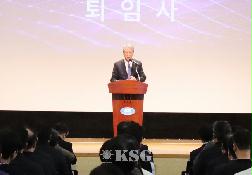


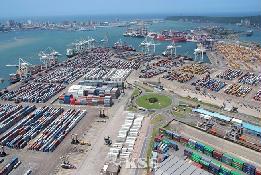
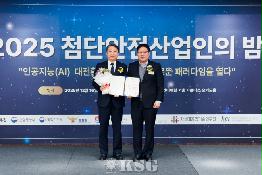
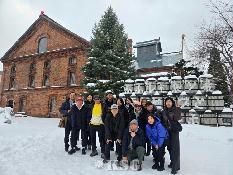
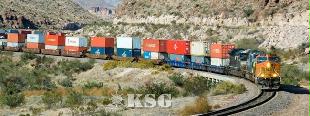
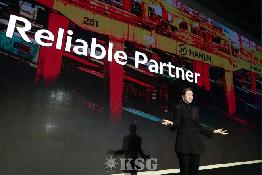



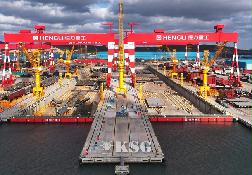
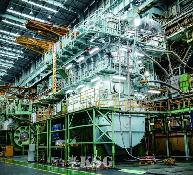

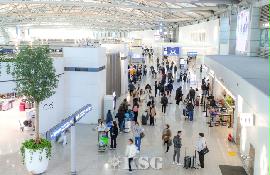
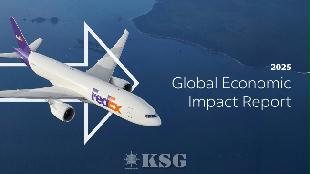
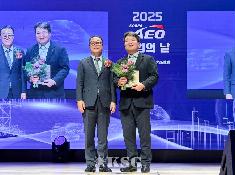
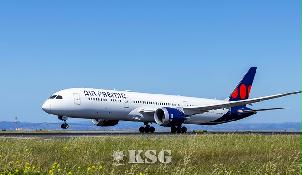
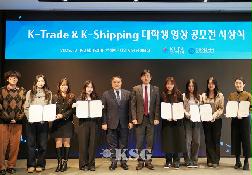

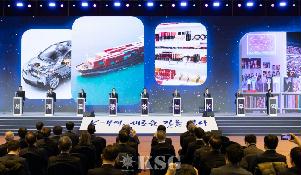

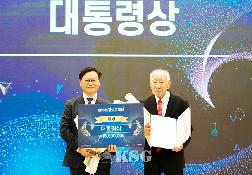
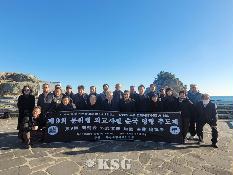

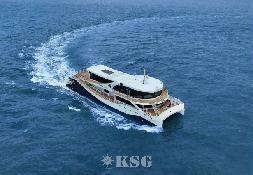











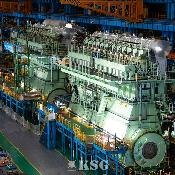
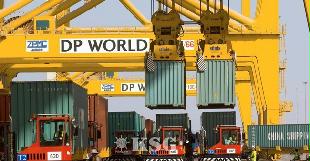























0/250
확인